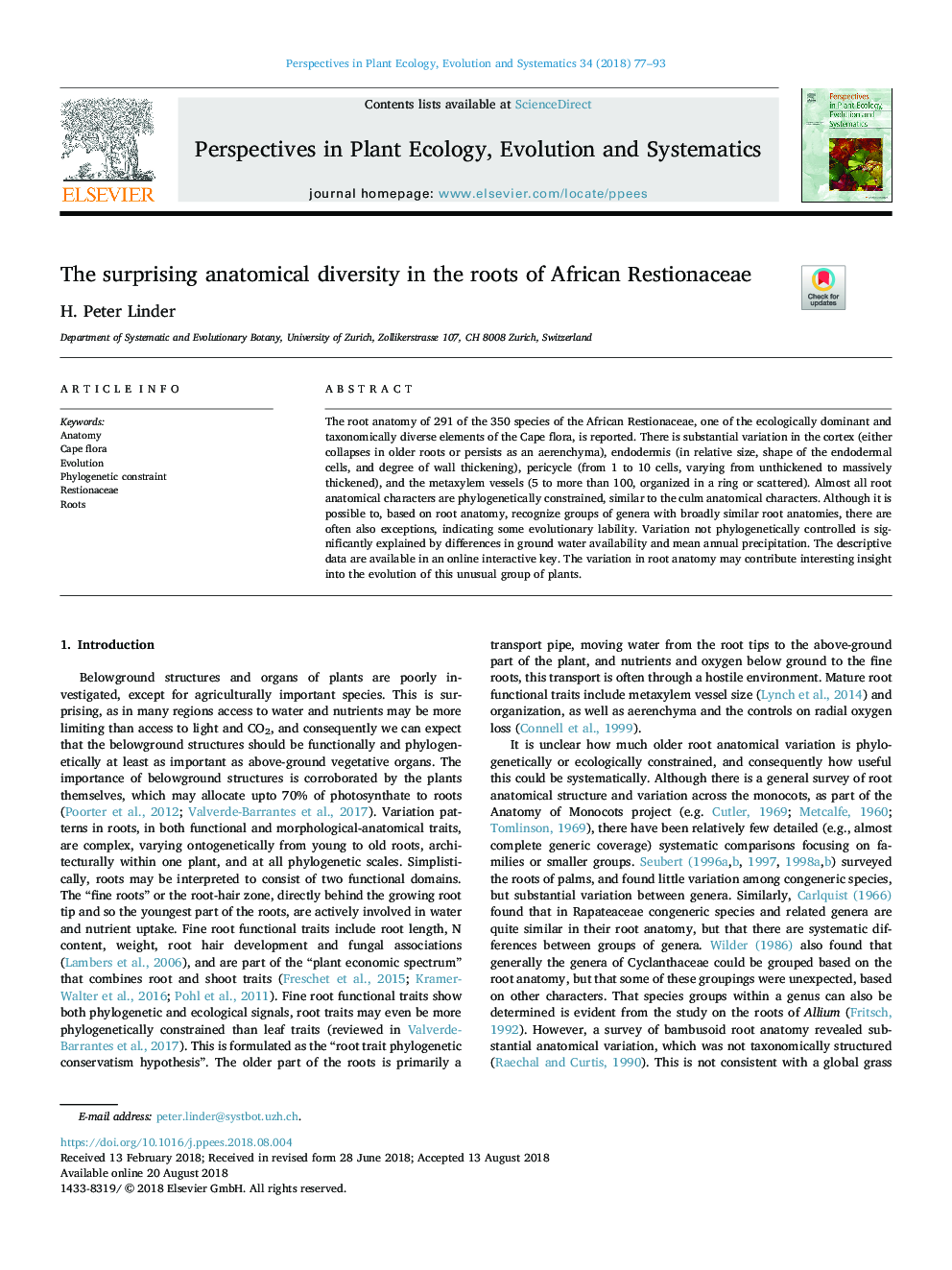| Article ID | Journal | Published Year | Pages | File Type |
|---|---|---|---|---|
| 8849478 | Perspectives in Plant Ecology, Evolution and Systematics | 2018 | 17 Pages |
Abstract
The root anatomy of 291 of the 350 species of the African Restionaceae, one of the ecologically dominant and taxonomically diverse elements of the Cape flora, is reported. There is substantial variation in the cortex (either collapses in older roots or persists as an aerenchyma), endodermis (in relative size, shape of the endodermal cells, and degree of wall thickening), pericycle (from 1 to 10 cells, varying from unthickened to massively thickened), and the metaxylem vessels (5 to more than 100, organized in a ring or scattered). Almost all root anatomical characters are phylogenetically constrained, similar to the culm anatomical characters. Although it is possible to, based on root anatomy, recognize groups of genera with broadly similar root anatomies, there are often also exceptions, indicating some evolutionary lability. Variation not phylogenetically controlled is significantly explained by differences in ground water availability and mean annual precipitation. The descriptive data are available in an online interactive key. The variation in root anatomy may contribute interesting insight into the evolution of this unusual group of plants.
Related Topics
Life Sciences
Agricultural and Biological Sciences
Ecology, Evolution, Behavior and Systematics
Authors
H. Peter Linder,
